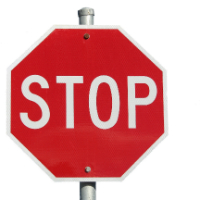Automotive Oil Change
The Automotive Oil Change, a Saturday afternoon tradition for many people. Why spend the money at a quick lube shop, only to drive off worrying if they tightened your drain plug! You can buy your oil and filter and a few cheap tools, and save some money doing your own automotive oil change.
Let’s look first at a list of tools you will need to change your own oil.
1. Automotive Jack and Jack Stands, or a set of ramps. If you have a large truck or SUV, you may be able to fit under the vehicle without raising it.
2. Set of wrenches or adjustable wrench to remove drain plug. Most cars today use metric fasteners, so a metric wrench set will be best. An adjustable wrench will work, but not as well as a properly sized wrench.
3. Drain pan. There are some cool designs out there which allow you to seal up the pan after draining the oil, and haul it to your local oil recycling place. I do a lot of oil changes, so my pan has a spout where I can pour the oil into a larger container. I take my oil to my local garage where they burn it in their heater during the winter months.
4. Oil filter wrench. The style you buy will be determined by your car. If the engineers were kind to you and gave you room to get to the filter, an adjustable band type will work well. If you have little room, the style which fits over the end of the filter may work better. Take a look under your car and see what will work best for you.
5. Shop rags or towels. It can be a messy job, make sure you have something to clean up with.
Now it’s off to the automotive store to buy your supplies. You will need oil, filter and a drain plug gasket. You may not need to replace the drain plug gasket every oil change, but have one around just in case. I won’t go into what brand of oil to buy, regular or synthetic, or what brand of filter. I will include some links at the bottom of this article to other sections of this website which cover all that.
So now you are back to the house with your supplies and tools, let’s get on with your automotive oil change.
1. Raise the vehicle with your jack and secure with jack stands… never leave the vehicle resting on the jack, always use the jack stands to support the vehicle. If you have ramps, make sure they can not slip when driving onto them, and no matter how you raise your vehicle chock the rear wheels so the vehicle can not move.
2. Position your drain pan under the drain plug and remove the plug. Try not to get too much oil all over yourself and make sure the majority of the oil gets into the pan. Some people recommend draining the oil when it’s hot… I am not one of them. Todays multi-weight oils are thinner when cold and when changing oil burn a lot less ! Let the oil drain for a few minutes.
3. Inspect drain plug and remove any debris from the end. Most drain plugs have a magnet in the end to catch metal shavings floating around in the oil. Also check the gasket if your car has one (not all do) and replace if damaged.
3. Locate the oil filter and loosen it. Move the drain pan under the filter to catch any oil which may run down.
4. Clean the gasket mating area where the filter meets the engine block. This is important for a good seal with the new filter.
5. Take you new filter and put some fresh oil around the rubber gasket at the face. You can prefill the filter with oil if your filter mounts vertically, but if it’s horizontal, I would not prefill.
6. Tighten the oil filter. Thread the filter on finger tight then tighten 1/4 turn. Anymore and you will not be able to remove it at the next oil change, any less and you will have oil leaking out as you start your engine.
7. Bring your car back down to the ground and open the hood.
8. Fill engine with oil. Your owners manual should give you the recommended amount of oil for your engine. Once you have put that amount it, check the level with the dip stick to verify.
9. Start the engine, while watching your instrument panel. If you have an oil pressure gauge, make sure you have oil pressure after the first few seconds. If you have an idiot light, make sure it goes out after a few second.
10. With the engine running, look under the front of the vehicle and inspect for any leaking oil. If you tightened the drain plug and the oil filter properly, you should not see any oil slicks under the vehicle.
11. Turn off the engine, wait a few minutes and check the oil level again. Add if needed. It’s a good idea to take a permanent marker and write the total amount of oil you put in the engine on the engine sticker which is located under the hood. This way, the next time you attempt your automotive oil change, you will know exactly how much oil to put in the first time.
12. Celebrate the fact that you saved some money, and got a little grease under your finger nails.
Some good links related to this article….
Everything you wanted to know about oil
https://www.autoeducation.com/autoshop101/oil-change.htm
And if you decide to pay someone else to do it, we have a list of oil change coupons from all your favorite service centers.
Kevin Schappell
RELATED VIDEO:
 Before you click out! While I know a lot about cars, I don't know a lot about YOUR CAR! A repair manual is essential and I have a way for you to get one FREE.
Before you click out! While I know a lot about cars, I don't know a lot about YOUR CAR! A repair manual is essential and I have a way for you to get one FREE. Learn more with our Autoshop101 courses.
Posted: 6th June 2006 | Author: Kevin Schappell | Category: Oil & Lubrication
